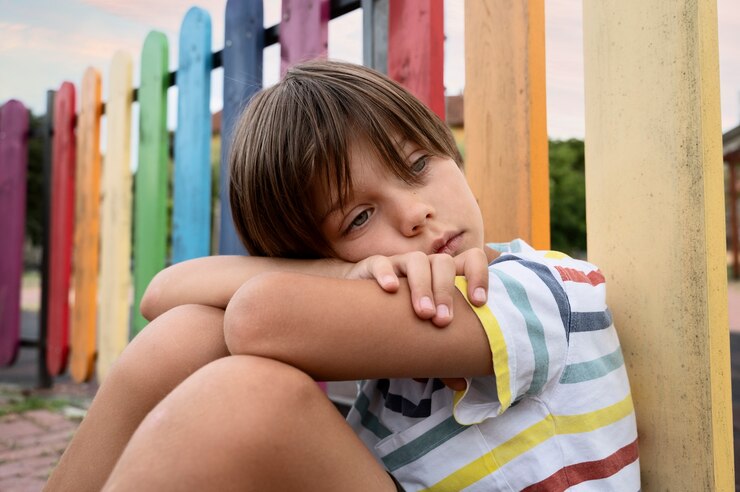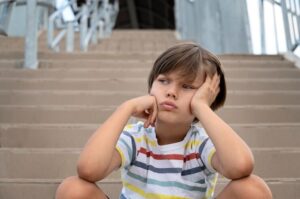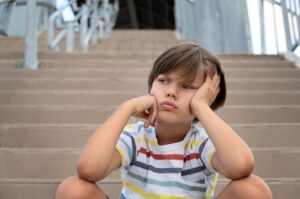5 Ways to Help Withdrawn Children Step Out of their Shell and Thrive
Discover 5 effective strategies to empower withdrawn children to break out of their shell and thrive in their environment.
Understanding withdrawn behavior in children
Withdrawn behavior in children can manifest in various ways, including retreating from social interactions, avoiding eye contact, and appearing disengaged or uninterested in activities. It’s crucial to recognize that withdrawal isn’t necessarily a sign of stubbornness or defiance but can stem from underlying factors such as anxiety, low self-esteem, or sensory sensitivities. By understanding the root causes of withdrawn behavior, caregivers and educators can better tailor their approaches to support these children effectively.
The impact of withdrawal on a child’s development
 Withdrawal can have significant implications for a child’s development across various domains, including social, emotional, and cognitive areas. Socially, withdrawn children may struggle to form meaningful connections with peers, leading to feelings of isolation and loneliness. Emotionally, they may experience heightened levels of anxiety or depression due to a lack of social support and validation. Moreover, withdrawal can hinder cognitive development by limiting opportunities for learning and exploration in social settings. Recognizing these impacts underscores the importance of addressing withdrawal proactively to promote healthy development.
Withdrawal can have significant implications for a child’s development across various domains, including social, emotional, and cognitive areas. Socially, withdrawn children may struggle to form meaningful connections with peers, leading to feelings of isolation and loneliness. Emotionally, they may experience heightened levels of anxiety or depression due to a lack of social support and validation. Moreover, withdrawal can hinder cognitive development by limiting opportunities for learning and exploration in social settings. Recognizing these impacts underscores the importance of addressing withdrawal proactively to promote healthy development.
Signs that a child may be withdrawn
Identifying withdrawn behavior in children requires careful observation and attention to subtle cues. Some common signs include excessive shyness, reluctance to participate in group activities, avoiding eye contact, and limited verbal communication. Additionally, withdrawn children may exhibit physical symptoms such as tense body language or fidgeting in social situations. By being attuned to these signs, caregivers and educators can intervene early and provide the necessary support to help these children thrive.
The importance of creating a supportive environment
Creating a supportive environment is essential for nurturing the growth and development of withdrawn children. This entails fostering a sense of safety and acceptance where children feel valued and respected for who they are. Implementing strategies such as creating quiet spaces for retreat, establishing predictable routines, and promoting a culture of empathy and understanding can help alleviate anxiety and build trust. Moreover, providing opportunities for meaningful engagement and positive reinforcement can boost confidence and self-esteem, empowering withdrawn children to step out of their shells and engage more fully with the world around them.
Building trust and rapport with withdrawn children
 Building trust and rapport is foundational to supporting withdrawn children on their journey toward social integration and self-expression. This involves adopting a patient and non-judgmental approach, allowing children to gradually open up at their own pace. Taking the time to listen actively, validate their feelings, and empathize with their experiences can foster a sense of connection and safety. Additionally, consistency and reliability in interactions help establish a sense of predictability and security, laying the groundwork for deeper engagement and collaboration.
Building trust and rapport is foundational to supporting withdrawn children on their journey toward social integration and self-expression. This involves adopting a patient and non-judgmental approach, allowing children to gradually open up at their own pace. Taking the time to listen actively, validate their feelings, and empathize with their experiences can foster a sense of connection and safety. Additionally, consistency and reliability in interactions help establish a sense of predictability and security, laying the groundwork for deeper engagement and collaboration.
Encouraging social interaction and participation
Encouraging social interaction and participation is essential for helping withdrawn children develop essential social skills and forge connections with peers. This can be achieved through structured activities that promote teamwork, communication, and cooperation. Providing opportunities for small group interactions, collaborative projects, and shared experiences fosters a sense of belonging and mutual support. Additionally, modeling positive social behaviors and offering gentle encouragement can instill confidence and motivation to engage more actively in social settings.
Providing opportunities for self-expression and creativity
Providing opportunities for self-expression and creativity empowers withdrawn children to explore their interests, talents, and passions in a safe and supportive environment. This can involve offering a variety of artistic outlets such as drawing, painting, music, or drama, allowing children to express themselves freely without fear of judgment. Moreover, encouraging open-ended exploration and experimentation fosters a sense of autonomy and self-discovery. By tapping into their creative potential, withdrawn children can cultivate a sense of identity and agency, enabling them to navigate social interactions with greater confidence and authenticity.
Seeking professional help and guidance
 In some cases, supporting withdrawn children may require professional intervention from psychologists, therapists, or special education professionals. These experts can conduct comprehensive assessments to identify underlying issues contributing to withdrawal and develop tailored intervention plans to address these challenges effectively. Additionally, they can provide valuable guidance and support to caregivers and educators on implementing evidence-based strategies and techniques. Collaborating with professionals ensures that withdrawn children receive the specialized care and support they need to thrive academically, socially, and emotionally.
In some cases, supporting withdrawn children may require professional intervention from psychologists, therapists, or special education professionals. These experts can conduct comprehensive assessments to identify underlying issues contributing to withdrawal and develop tailored intervention plans to address these challenges effectively. Additionally, they can provide valuable guidance and support to caregivers and educators on implementing evidence-based strategies and techniques. Collaborating with professionals ensures that withdrawn children receive the specialized care and support they need to thrive academically, socially, and emotionally.
Case studies of successful interventions for withdrawn children
Case studies provide valuable insights into the effectiveness of various intervention strategies for supporting withdrawn children. By examining real-life scenarios and outcomes, caregivers and educators can gain practical knowledge and inspiration for addressing similar challenges in their own contexts. These case studies may highlight the importance of personalized approaches, multidisciplinary collaboration, and ongoing monitoring and adjustment to meet the unique needs of withdrawn children effectively. By learning from successful interventions, stakeholders can refine their practices and enhance their ability to support the social and emotional well-being of withdrawn children.
Conclusion: Helping withdrawn children unlock their potential
 In conclusion, supporting withdrawn children requires a holistic approach that addresses their social, emotional, and cognitive needs in a supportive and nurturing environment. By understanding the underlying causes of withdrawal, creating a supportive atmosphere, building trust and rapport, and providing opportunities for social interaction and self-expression, caregivers and educators can empower withdrawn children to thrive. Additionally, seeking professional help when needed and drawing insights from successful interventions can further enhance the effectiveness of support efforts. Ultimately, by embracing the power of understanding and empathy, we can unlock the potential of withdrawn children and help them flourish in all aspects of their lives. Together, let’s foster a culture of inclusivity and acceptance where every child feels seen, valued, and empowered to shine.
In conclusion, supporting withdrawn children requires a holistic approach that addresses their social, emotional, and cognitive needs in a supportive and nurturing environment. By understanding the underlying causes of withdrawal, creating a supportive atmosphere, building trust and rapport, and providing opportunities for social interaction and self-expression, caregivers and educators can empower withdrawn children to thrive. Additionally, seeking professional help when needed and drawing insights from successful interventions can further enhance the effectiveness of support efforts. Ultimately, by embracing the power of understanding and empathy, we can unlock the potential of withdrawn children and help them flourish in all aspects of their lives. Together, let’s foster a culture of inclusivity and acceptance where every child feels seen, valued, and empowered to shine.
Learn more about Help Withdrawn Children on our YouTube channel.
#withdrawnbehaviorinchildren #withdrawnchildren #childspychology #waystohelpwithdrawnchildren




